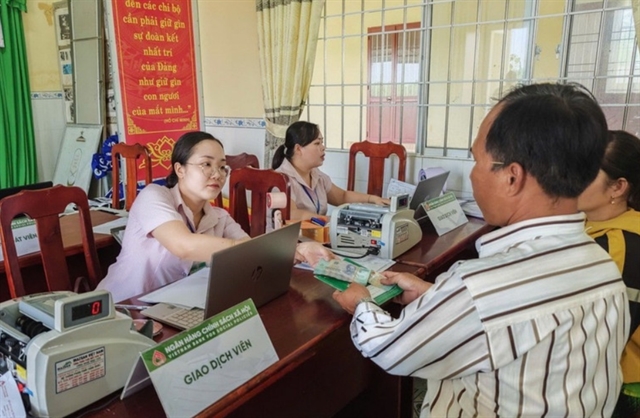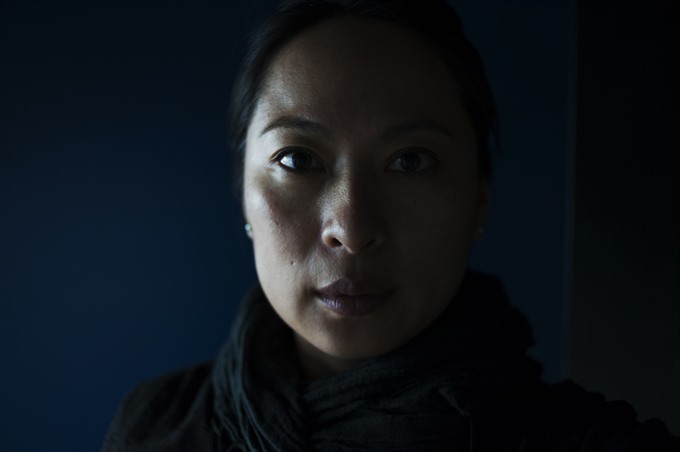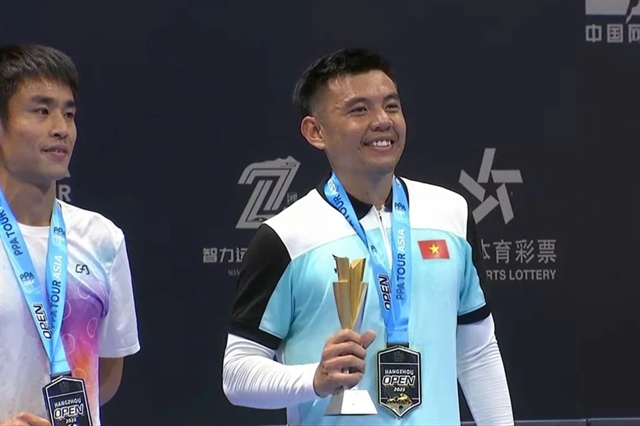 Life & Style
Life & Style

Nana Chen is a Taiwanese photographer currently working on a variety of projects. She served as an arts columnist for the South China Morning Post in 2005 after holding many positions like violinist, teacher, textbook writer and lifestyle and travel journalist and photographer for newspapers and magazines.
 |
Nana Chen is a Taiwanese photographer currently working on a variety of projects. She served as an arts columnist for the South China Morning Post in 2005 after holding many positions like violinist, teacher, textbook writer and lifestyle and travel journalist and photographer for newspapers and magazines.
She began to focus on personal photography in 2009 and started to work on her own architectural, interior and portrait projects. She came to HCM City in 2011 and has been working since then on a project entitled DISCARDED, featuring photographs of rubble left behind after people were evicted from their homes to make way for new development. Her first solo exhibition was held recently at Heritage Space in Hà Nội, displaying 12 photos from DISCARDED.
Nguyễn Thúy Bình interviews photographer Chen about her photography career.
Could you talk more about the photography project DISCARDED? Which photos from the project do you like best?
I had passed by many demolished city blocks and started wondering what people left behind. Having moved more than 45 times in my life, I was curious what I’d find. I started taking these photos in 2011. It’s an observation of urban development and a documentation Việt Nam’s history.
I cannot say there are any favourites. I chose the 12 photos from hundreds and each shows a different side of the story for me.
What was your aim when you started the project? Do you think your art project will impact society?
This is up to the viewer to decide. I didn’t really have an aim because I didn’t know what I would find. It was simply curiosity. It just planned to make pictures I like.
What is the strongest impression you got as you were taking the photos?
The number of toys children left behind. This made me sad. During my talk at the exhibition closing ceremony on Sunday I was discussing and recalling a favourite doll my parents forced me to leave behind in Buenos Aires when I was eight. At the time we only had a tourist visa to America and they were afraid my doll would show our intention stay.
You had an art tour with the exhibition visitors on opening and closing days. Did you enjoy it?
I always love interacting with the visitors. Everyone sees differently. I had composed music to go with the images. The arrangement and production were done by my musician friends. It was the first time I added a second element to my images. The result was very interesting. Some people felt very moved, some felt sad, scared, curious, intrigued. What I noticed was people would stare at each image for a very long time in silence, moving back and forward several times.
The art tour or artist talk is a good way to engage with small groups of people, a bit like a moving roundtable discussion. Each photograph brought up different topics, beyond the obvious, such as childhood memories, the idea of home, professions, urban development, families, home businesses, development, and so on.
![]()
Why did you have the first solo exhibition in Hà Nội whilst you are living in HCM City? Will the exhibition be held in HCM City?
My dear friend, the curator Tang Fu-Kuen, suggested that I look at Heritage Space in Hà Nội. I would love to show DISCARDED in HCM City. Let me know if there’s a gallery interested in showing the work of a foreigner. Otherwise, I am already arranging some private viewings of smaller prints. It will be a pleasure to share these images locally.
In Việt Nam you have two photo projects, DISCARDED, and From War Babies to Billionaires": a portrait series on Vietnam’s super-rich women. Do you usually take photos for artistic creativity or for commission? Which do you prefer?
I have focussed mainly on personal art projects for the last four years, but still do some commissioned editorial work from time to time. Sometimes, I’m commissioned to create portraits, which I absolutely love.
I cannot say I prefer one over the other. They are all different. With personal projects, I can become totally focussed on the emotions and not have much interaction with people for a long time. So it is always important to keep a balance.
Your work is in private collections around the world and has been featured in many newspapers and magazines like The Observer Magazine, Guardian, Esquire and Marie Claire. Which is more important to you?
The art projects are a way to think things through, work through feelings or emotions current or past. I work alone for long periods of time. With the journalistic commissions, the subject is very focussed, the pace is fast with the collaboration lasting normally one to two weeks. I love this, too, because I’ve had the great opportunity to meet and work with some of the best journalists and editors in Asia, Europe, America and Australia.
My relationship to people is most important to me. One of the reasons I love my work is because I get to meet people of all ages from different countries, cultures and professions. I love hearing other people’s stories, not just creating my own. I also love learning, so when I meet new people I learn from their different viewpoints on life, their expertise and sometimes we stay in touch so the world expands a bit more.
You currently divide your time between Việt Nam, Thailand and Europe. Why do you choose Việt Nam and Thailand and not other countries in Asia?
When I’m in my own country, people often think I’m a foreigner and speak English to me or ask me many questions. In Việt Nam and Thailand, people assume I’m one of them. It’s perhaps the closest I’ve come to a sense of belonging, at least externally. — VNS



